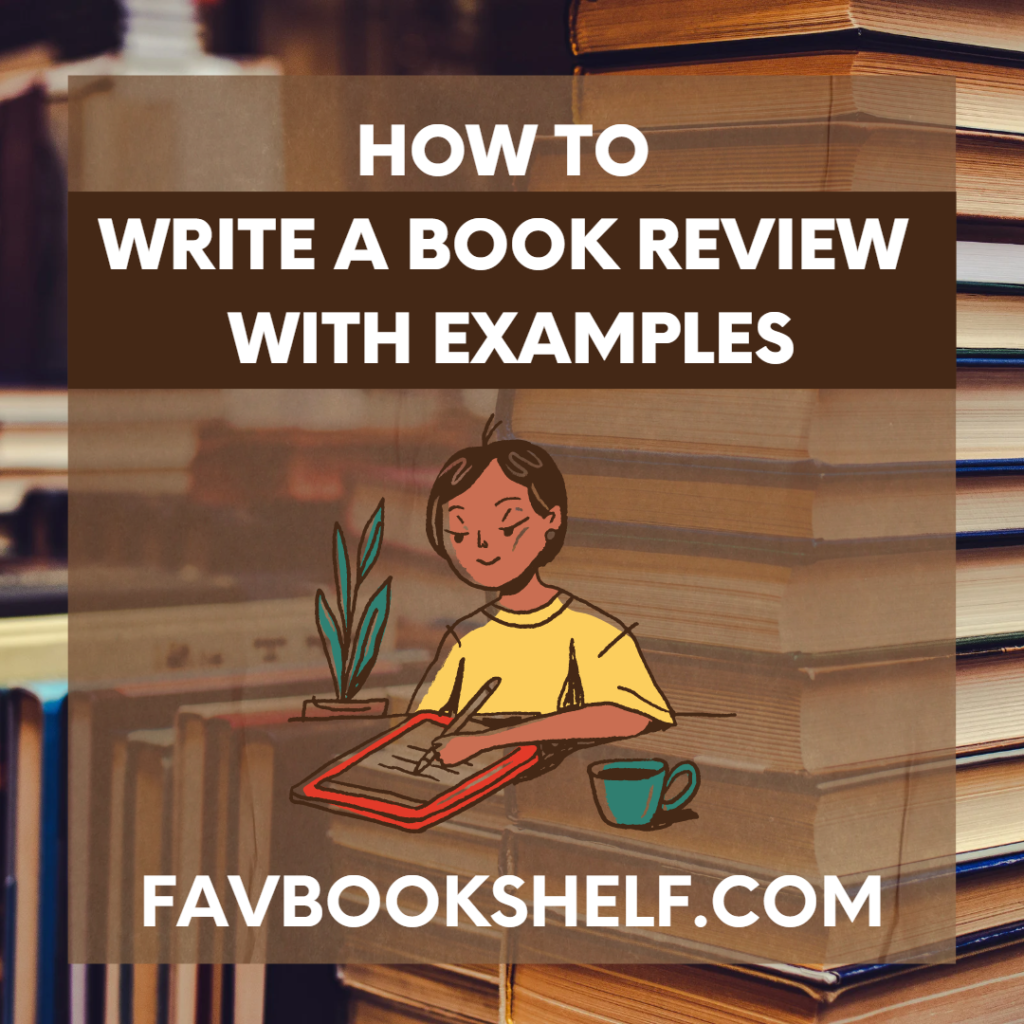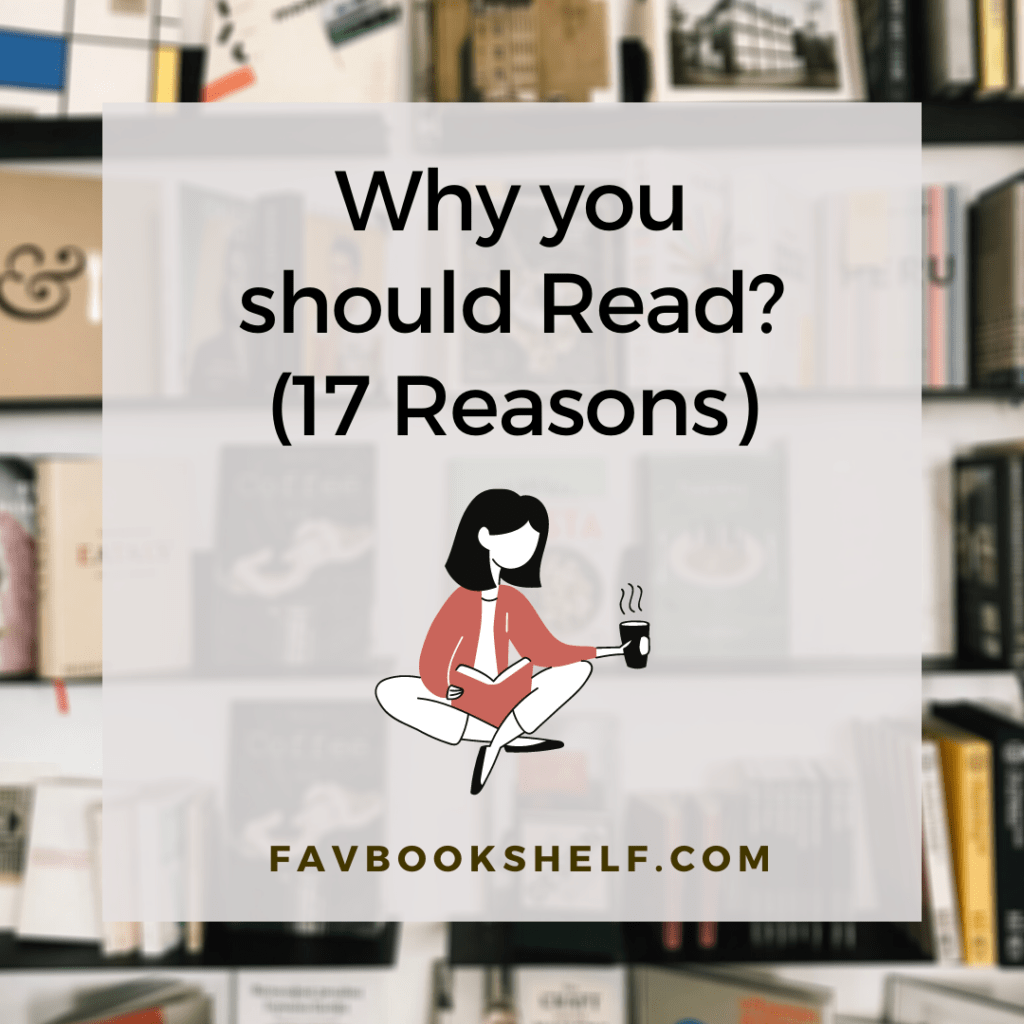A book review is a form of critical literary analysis that includes a description of the book summary and a critique of various aspects of the book. It is one of the things new readers look to determine if the book is worth reading. We’ll discuss in depth how to write a book review with examples.
Also, a review gives the reader a deeper insight into the book and helps determine the success of the text, i.e., a good review can ensure a good reception of the book, while a bad one could hurt it.
Being a book reviewer is an exciting job. It is a new and fresh way to express opinions that matter to the world and set a precedent for the book.
To write a good book review, a reviewer should consider several points when reading and writing the review. We will discuss these points with examples of how to write a good book review.
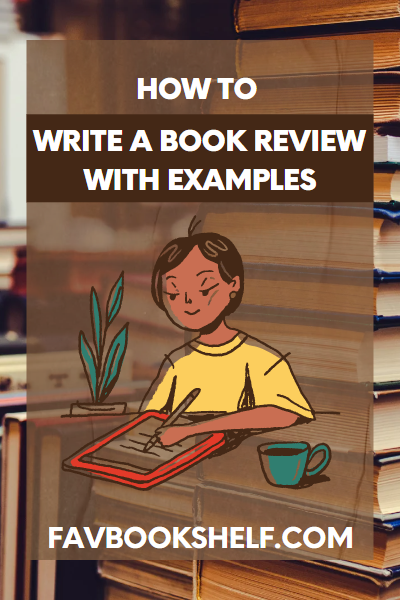
What to consider while reading a book?
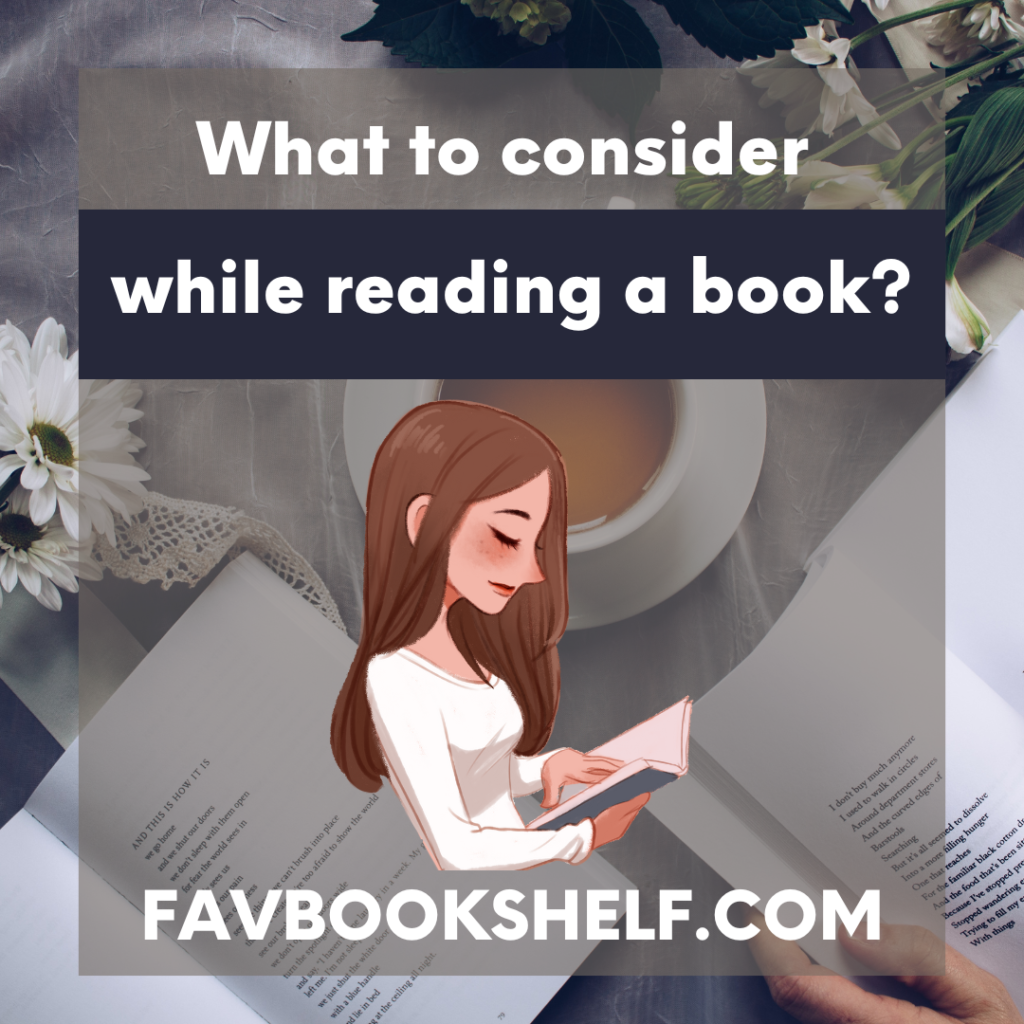
#1 Plot
The plot is one of the most critical aspects of reading a book. When you read a book, you get to know what it is about, the main plot, and the main focus of the book. To understand it better, the reviewer must pay attention to the story.
In my experience, it is always tricky to follow the story for at least two chapters when starting a new book. Wait until you get the point of the story. Then, take your time and reread some parts if you have to. This increases the likelihood that you will find a better understanding of the plot and storyline. Look for details necessary to the plot and must be included in the summary.
#2 Character Development
Characters, small or large, play an essential role in a book. In other words, it can be said that any reader is incomplete without feelings. This brings us to the second most crucial point to consider when reading a book: character development. To analyse this, the easiest way is to answer the following questions:
Who is the protagonist?
How does a character change from the beginning to the end of the book?
What are the reasons for this change?
What is the chemistry between different characters?
Have the characters developed emotionally/mentally?
You can find out the book’s character development level by answering these simple questions. It also helps to point out the facts that could have been changed to ensure better character development in the book.
#3 Praise and Criticism
When you read a book, please have a pen and paper handy to note any positive or negative aspects of the book. Whether it’s the plot, the pacing of the story, the language, objectionable content, or any other essential parts, your review is a place to share your thoughts honestly, so don’t be afraid to speak your mind. Critique wisely; your readership will be able to grow.
#4 Nature of Content
Another essential aspect to remember when reading the book is the nature of the content. This may include themes, profanity, religious content, sexual content, etc.
The nature of the content helps determine the likely age group of the readers and assists in writing age-appropriate content for the readers. Therefore, reviewers often need to pay more attention to this aspect.
Creating age-appropriate content is essential and can be done only when you understand the nature of the content.
Ethics to write a book review with examples
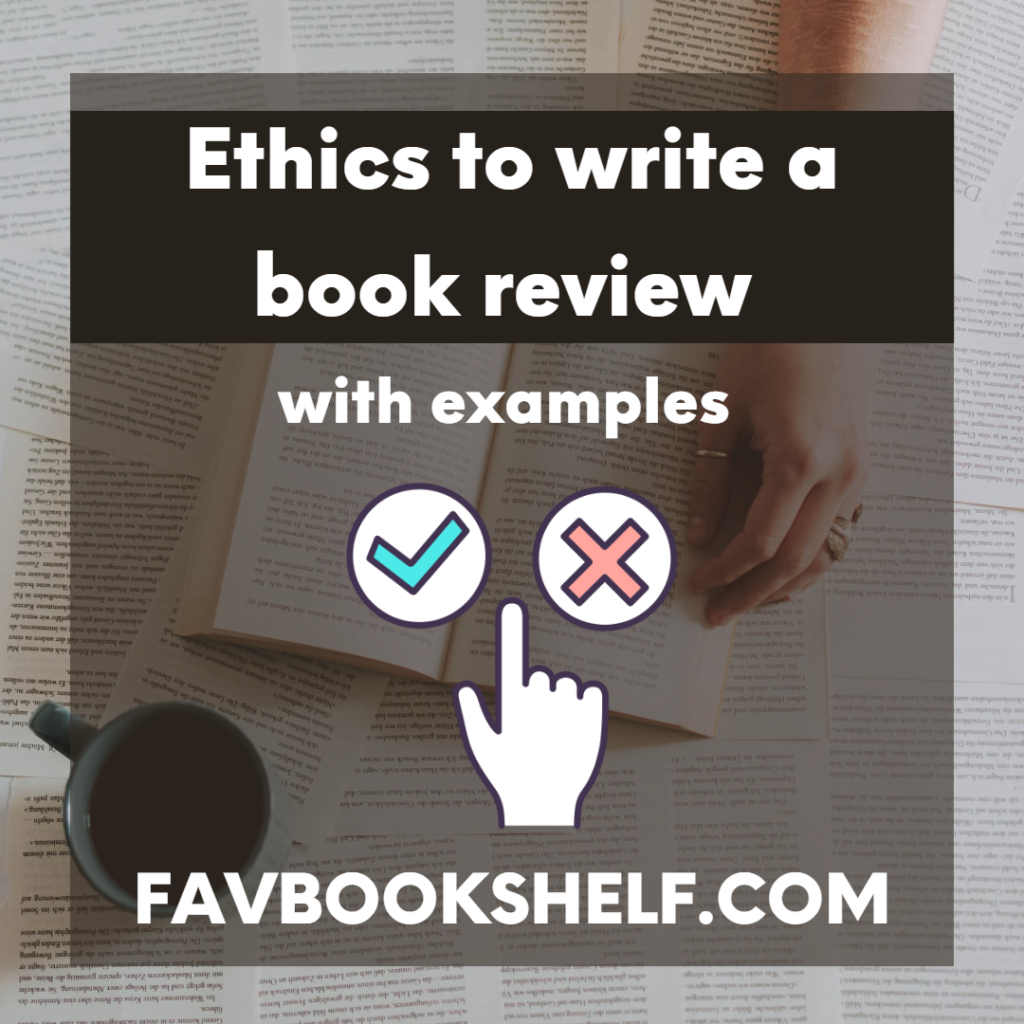
Different reviewers have different writing styles. Some are widely accepted, others not so much. What makes them so different? Here are the standards that every reviewer must follow.
#1 Avoid writing in all caps.
Using capitalised words is not usually tolerated when writing reviews, emails, messages, etc., as it gives readers the impression that the writer is shouting. This can be offensive and lead to a decline in your readership.
When writing a review, capital letters may only be used at the beginning of new sentences and in other exceptional cases. This is the most widely accepted ethical standard followed by reviewers worldwide.
#2 No profanity
Another point to consider when writing a book review is profanity. Using profanity can draw a lot of criticism from readers and hurt your book review. So, instead of harsh words, you can use subtle tones to express dissatisfaction in your book review.
Avoid using borderline swear words (such as “duh”) in the review to cover up all the instances when your reader might take offence to the language.
#3 Be diplomatic
When reading a book, you may need help finding the content satisfactory. In these cases, you can use subtle language to express your opinion. For example, in my previous reviews, I learned that one must use diplomacy to cover any unpleasant aspect.
For example, instead of saying, “I found the book slow and boring,” you could write, “The dragging plot makes for a mediocre reading experience.” See the difference? The first sentence seems harsh, but the second does not contain the tedious aspect of the book.
By being diplomatic, you can tone down the unpleasantness and replace it with content that will benefit readers.
#4 Level of professionalism
Please don’t use overly friendly language in your review. A book review may contain your thoughts and opinions, but it is still a professional text. You can use a professional tone mixed with a personal style when writing your checks. This could help expand your readership and make your review popular.
For example, the sentence ” I liked how the author used a fast-paced story in the book” comes across as personal rather than professional. So instead, you can write, “The fast-paced storyline is one of the commendable aspects of the book.” How does that sound to you? Hold back on personal comments and save them for reviews. Remember that the summary of the book does not need private comments.
Tips you should know on how to write a good book review, with examples:
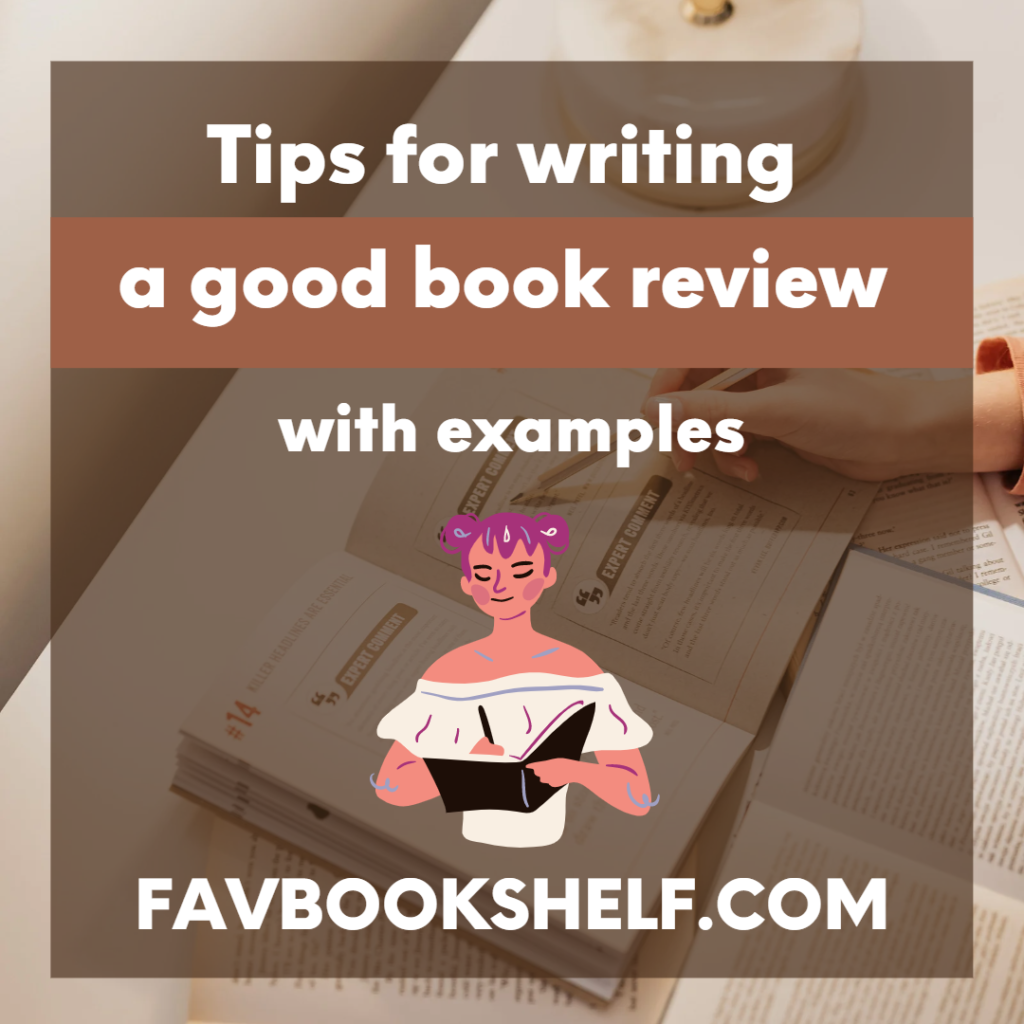
a good book review with examples
As anyone with experience knows, book reviews play an essential role in the success of a book. It helps you share your thoughts and opinions with other readers. A good review can build a solid reader base; a poorly written review can significantly affect the book’s reception. We will know how to express your thoughts professionally, improve your reader base, and learn how to write a book review with examples.
#1 Quotes and summary
Think hypothetically. You are asked to read an article about a book. What would you look for? For me, the answer is simple. I would look for a catchy opening line that would grab my attention. Now the question is, how do you do that?
Before you start writing, look for an appropriate quote or a few lines that describe the book you are reviewing. When readers visit your site, they usually see the paragraph or a few lines from the review and decide whether to read the entire article or skip it.
The presence of quotes in your book review, which are otherwise insignificant, can significantly impact your article and increase your chances of attracting a larger readership.
#2 Avoid spoilers
How would you feel if you were watching a new movie and someone came up to you and told you how it ended? It hurts. It takes all the fun out of it for you. It’s similar to books and book reviews. Readers usually only appreciate it when there are no spoilers in reviews.
For example, in a thriller, you know that a central character dies, significantly impacting the story. In this case, could you write the review around the level and avoid mentioning the surface in great detail? This way, you can explain the book’s important events without saying the character’s involvement.
In short, if you want your article to be successful, you should not include spoilers.
#3 Clarity in content
Clarity is another important factor when writing a book review. When writing a book review, you should ensure that the sentences are clear and easy to understand. This can be achieved by keeping your sentences short and contextual.
For example, you explain part of the book and then want to move on to the characters. “This brings us to another aspect of the book.” This sentence needs to clarify precisely what you are talking about. So instead, it is ” About character development of the characters ..” This sounds clearer than what you’d like to talk about. Clarity makes for a smooth reading flow, avoids confusion, and makes your review more engaging.
#4 Be honest
One of the most common errors I have seen in reviews is glossing over the words. What readers are looking for in a study is honesty. They want your honest opinion about whether the book is worth reading. If you do not like the book, say so. Then let them decide if they should consider your opinion. An over-the-top review with only optimistic points for an average book could hurt your review.
If you have trouble describing your dissatisfaction with the book, visit other sites like Goodreads.com and read the comments section to gather more information.
#5 Know your audience
Before you begin the first draft of the review, please take a moment to ask yourself a question. Who will read my review? This will give you a clear idea of the language you want to use.
For example, if you are writing a review for a children’s book, you must use language that any middle school child can understand. Another example might be this article. Reviewers are professionals and have an extensive vocabulary. To keep readers engaged, I need to keep my points simple and progressive so that they interest people.
#6 Explain both praise and criticism
This is where your notes come in. The points you noted as you read can become an essential part of this section. Praise and criticism reflect the quality of the book’s content. Make sure to cite your points carefully.
Another essential thing to remember is that when you describe your points, make sure they are connected. For example, use a gentle and polite tone to explain the harsh negative issues and word down the positive points to make the reviews sound more diplomatic.
#7 Explain essential plot points
The summary of the book should include a few significant and essential plot points which make up most of the book. Again, do not add any matter which might give away a critical twist in the book. Connect the ends and summarise the book in a paragraph or however convenient.
#8 Proofread before posting
Another essential point to consider before publishing an article is proofreading. You may often find that many things still need to be corrected, even after editing. In this case, go through the entire piece again so that the necessary corrections can be made and readers will find the article satisfactory.
#9 Conclusion
After you have finished the article, you should round it off with an apt conclusion. Essentially, the decision means a summary of what was in the review. Make sure that you briefly summarise all the main points. The most important part of a conclusion is the last line. In conclusion, the previous sentence must summarise the article in a few words.
For example, you can phrase the last line, “Overall, it’s a nice book that provides an exciting reading experience.” This line is the ultimate statement of positive or negative criticism of the book.
#10 Rating
The rating determines the quality of a book’s content and whether it is worth reading. The rating is usually done on a 5-point scale or a 10-point scale. Therefore, it is essential that the rating matches the reviews.
The rating scale is the first thing readers pay attention to. So make sure the rating is given after weighing the positive and negative reviews. The rating is explained in detail in the next section.
#11 Recommendations
The last and most important part of a book is the recommendation part. It is based solely on your personal experience and reflects your book taste.
If you would like to design an exceptional recommendation, please read the article’s next section.
How does the rating scale work?
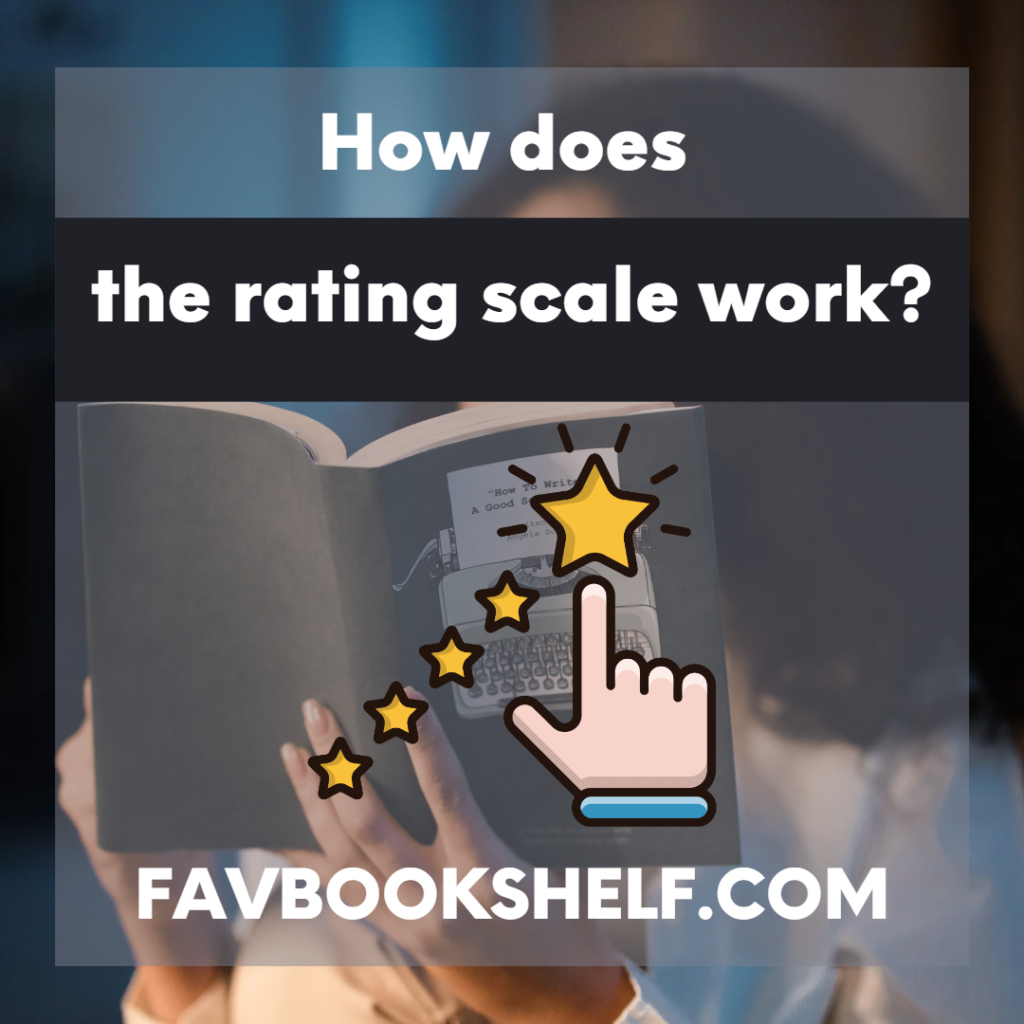
While searching for a book on the internet, you have probably encountered various texts with ratings of 5 or 10. These scales are the most common tools used in book reviews to determine a book’s success. High ratings are usually associated with high-quality content of the book. In other words, the higher the ratings, the more positive the feedback from readers. Here are the most commonly used rating scales and what they mean. Rating is essential if you want to write a good book review; we will learn that with examples.
1- The book is not satisfactory
2- The book contains below-average content
3- The book has an average content
4- the book has a good-quality range and is widely read
5- the book has exceptional quality content
When you give the rating in the book review, the main thing you should do is to make sure that it is consistent with the content of the study. In other words, the rating should be given after weighing the positive and negative points in the review. Reviews reflect your thoughts about the quality of the book’s content. So, consider all aspects before rating the book, and you can write a good book review. I hope you’ll find our examples helpful.
How to write an exceptional recommendation section?
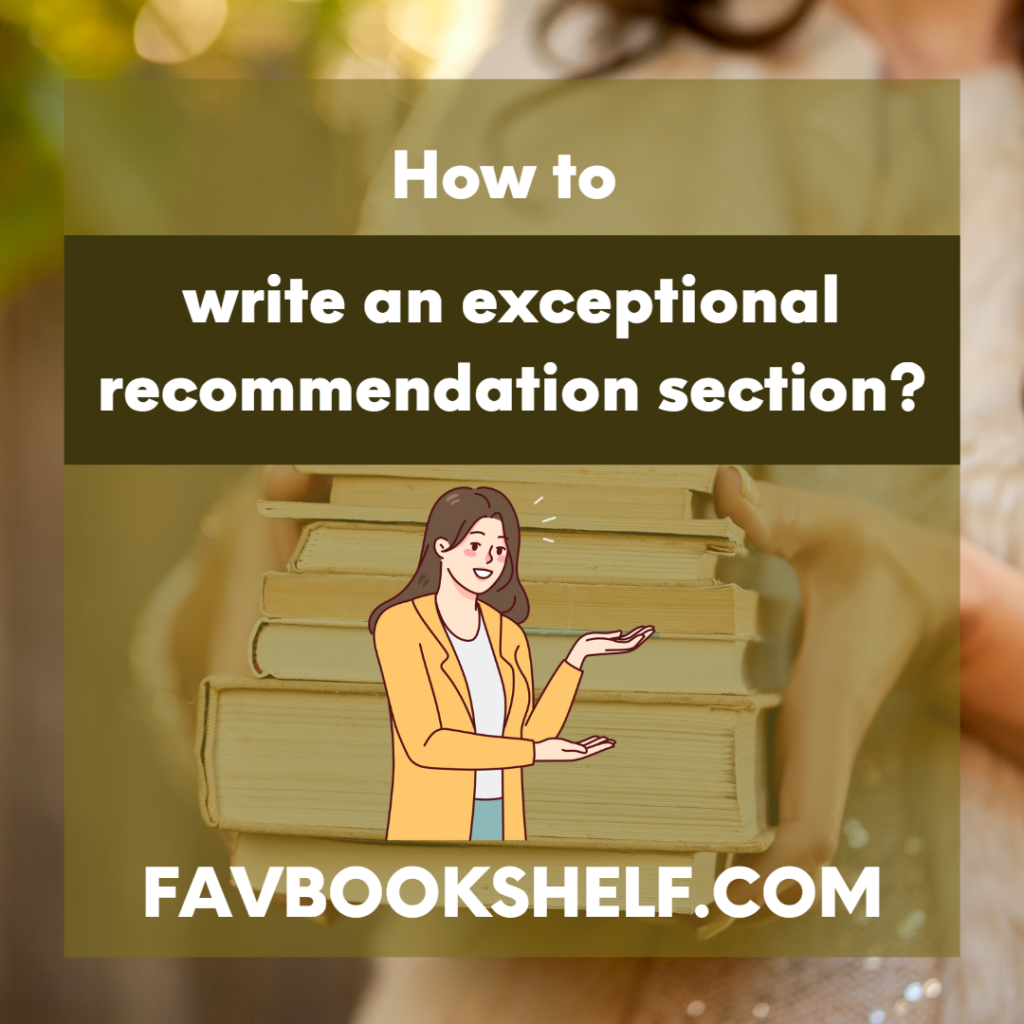
The recommendation section is one of the essential parts to remember while you write a book review, and we will discuss it with examples. But, first, it would be best to keep a few things in mind to write a commendable recommendation section.
#1 Genres
For a book to be easily accessible to readers, you must indicate the genre to which the text belongs. Some examples of genres are romance novels, historical novels, science fiction, young adult fiction, etc. By finding the appropriate genre of the book, you can let readers know what to expect.
There are many cases when you are stuck and need help deciding on the genre of the book. In this case, please focus on the main plot and what it describes. Otherwise, you can read other book reviews and find out the genre of a similar book.
#2 Similarity with books by other authors
Look for similar stories by other authors. In many cases, readers will be happy to receive a recommendation for a similar story. For example, if you are reviewing a book of Gothic literature, say The Thirteenth Tale, you can recommend other books of Gothic literature such as Rebeca, Wuthering Heights, etc.
There are cases where you can recommend other books by the same author that follow a different plot but have similar aesthetics. For example, the recommendation for The Kite Runner might include A Thousand Radiant Suns, another book by the same author.
#3 Information about the author
A recommendation section should include information about the author. For example, the books published and the writing style. Mentioning the author in the recommendation section can get readers interested in more of the author’s books and give them the fame they deserve.
#4 Age of reading audience
It is essential to determine the appropriate age range for the reading audience. There are many factors to consider. For example, mature topics, profanity, sexual and erotic content, and religious content can significantly affect the age limit.
For example, a book with themes such as murder and kidnapping with lots of blood and erotic content may not be appropriate for children and teens. In this case, a supplement to the recommendation section indicating the preferred age limit for readers with an explanation is helpful.
#5 Readers’ interests
Last but not least, consider the reader’s interest and mention it in the review. For example, add, “This book is perfect for lovers of fantasy adventure with a touch of contemporary romance.” The information may change depending on the genre of the book, but it is perfect as a closing line for the recommendations section and probably for the entire review.
Example of a book review (fiction)

Perilous Obsession by Geoffrey M. Cooper is a fantastic medical thriller novel. The book tells the story of Dr. Brad Parker and his partner, Agent Karen (FBI), who investigates a seemingly straightforward murder case that turns into something sinister. As they investigate a death by overdose, Dr. Parker suspects something is happening within the organisation.
Unfortunately, things worsen when the two doctors involved in the incident are found dead. When it turns out to be a ring of sex traffickers, it’s up to Dr Parker and his trusted partner Karen to unravel the mystery and bring justice to the victims and perpetrators.
The fast-paced plot helps create an appropriate environment of distrust. In addition to this statement, the excellent plot development makes this book even more compelling and exciting. The shocking twists and turns throughout the book will have the reader biting their nails in anticipation.
Why should you read this book?
Although the book deals with issues such as sex trafficking, the erotic and profane content is minimal. An equally satisfying ending follows the sombre tone of the story. What is also fascinating about the book is that the detailed plot leaves no gaps in the story, bringing it full circle.
Overall, this medical thriller provides a unique reading experience. The presence of themes such as murder, rape, and sex trafficking make this book a preferred reading experience for an adult audience. I would give this book 5 out of 5 stars. This book is perfect for readers who love mystery and thriller novels.
Example non-fiction

Tree Magic: The Path of Druids, Shamans, and Mystics by Iva Kenaz is a well-written book that explores nature’s connection to the spiritual world and its significance in history. From the legendary Tree of Life to the Axis Mundi and the interdimensional portals, this book explores tree magic’s mythological and philosophical background. In addition, it opens up many new and exciting facts about this subject. The book’s first part tries to solve the mystery of the World Tree and the Tree of Life.
The different deities and the ancient connection between nature and the human species are wonderfully read with the help of myths worldwide. The second and third parts of the book then focus on the practical applications of tree magic and a guide to understanding the magical trees and their meanings. This beautiful anthology has an apt ending that fits the magical tone of the book.
Why should you read this book?
The book strikes a balance between the mythological facts and the magical realism of tree magic. With a touch of astrology through the connections of constellations and nature, the author creates a beautiful landscape without any boundaries. One reason that encourages people to read this book is to expand their spiritual knowledge and bring them closer to trees and nature. However, apart from the scenery and the successful formatting, there are some cases where the mythological facts need improvement.
Also, there are many instances where the gods deviate from the original form, as mentioned in other mythological sources. These errors aside, the formatting of the book is masterfully done. In addition, the lack of profanity and the purely spiritual content make this book a perfect read for adults. Overall, it is a delightful book that will provide a comforting reading experience for readers interested in mythology and tree magic.
Conclusion
Book reviews are essential for people to express their opinions about texts and form a community with like-minded readers. I hope you get all the answers to your question on How to write a book review, and our examples were helpful. You can create unique content and expand your readership using the simple points above.
Articles you might like as well:
- The Best Romantic Quotes from the Books
- What is better: Books or Movies? – Favbookshelf
- 12 Best Fiction Books to read in 2021
- The Best Quotes from How to Win Friends and Influence People
Videos you might like:
Are you an author or a publisher? If yes, then you must check our services for promotions and marketing. They will undoubtedly benefit you.
Disclosure: All our content is honest. Also, some links in this post may be affiliate links, meaning we receive a commission if you click a link and purchase something we recommend.
Which is your favorite book? Comment below. We would love to know your favorite one.
Subscribe to our newsletter to never miss our updates and book recommendation.
Follow us on Instagram, Twitter, Pinterest, Youtube, Facebook, and Goodreads to learn more about us.
P.S. If you share it, it will make our day.
Have a great day ahead! 🙂
Happy Reading, and Keep Smiling!!!
